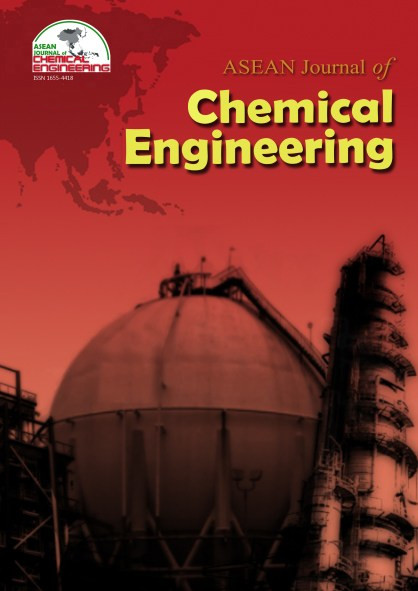Base Case Simulation of a Semi-Batch Emulsion Copolymerization Process
Abstract
It has been long recognized that emulsion polymerization is a complex heterogeneous process involving transport of monomers and other species and free radicals between aqueous phase and organic phases. Though there are a number of models available in the literature, most of them deal only with specific aspects in emulsion polymerization and are far from being general. To simulate this complicated process and to achieve an adequate level of understanding, a Polymer Plus' software from Aspen Technology, Inc. has been used. The objective of this work is to illustrate the principle use of Polymers Plus' and to simulate and analysis the free-radical seeded emulsion copolymerization of styrene-butadiene process model in a semi-batch reactor. The base case simulation can be used to gain process understanding by analyzing how process variables and operating conditions during the course of a semi-batch reactor affect product quality.
References
2. Blackley,D.C. (1997). Polymer lattices:Science and technology, Chapman & Hall, London.
3. Broadhead, T. 0., Hamielec, A. E., MacGregor, J. E (1985). "Dynamic modeling of the batch, semi-batch and continuous production of styrene/butadiene copolymers by emulsion polymerization," Makromolekulare Chemie. Suppl, 10/11, 105-128.
4. Casella, E. L., et al. (2003). "Mathematical modeling of batch emulsion copolymerization processes," Polymer Reaction Engineering,11,869-910.
5. Gao, J., Penlidis, A. (2002). "Mathematical modeling and computer simulator/ database for emulsion polymerizations," Prog. Polym. SCL,27, 403-535.
6. Gilbert,R. G. (1995). Emulsion polymerization. A mechanism approach. Academic Press.
7. Ginsburger, simulation E., et al. of (2003). batch and "Modelling and semi-batch emulsion copolymerization of styreneand butyl acrylate," Chem. Eng. Sci., 58, 4493-4514.
8. Gloor, P E., Warner, R. J. (1996). "Developing feed policiesto maximizeproductivityin emulsion polymerization processes," ThennochimicaActa, 289, 243-265.
9. Harkins, 1428. W. D. (1947). J. Am. Chem. Soc. 69,
10. Harkins,W.D., (1945).J. Chem. Phys.,13,301.
11. Lovell, PA., EI-Aaser,M.S. (1997). Emulsion polymerization and emulsion polymers, J. Wiley,NewYork.
12. Sayer, C., of et al. semicontinuous (2001). "Dynamic optimization emulsion copolymerization: composition and molecular weight distribution," Computers and Chemical Engineering, 25, 839-849.
13. Sayer, C., Lima, E. L., Pinto, J. C. (1997). "Dynamic modeling of SBR emulsion polymerization reactors refrigerated by thermosyphons, Chern. Eng. Sci., 52, 341-356.
14. Smith,W.V.,Ewart,R. H. (1948).J. Chern.Phys. 16, 592.
15. Van Krevelen, D. W. (1990). Properties of polymers, 3rd ed., Elsevier, Amsterdam.
16. Yabuki,Y, Nagasawa, T., MacGregor, J. F. (2000). "An industrial experience with product quality control in semi-batch processes," Computers & Chemical Engineering,24, 585-590.
17. Zeaiter,J., Romagnoli, J. A., Barton, G. W., Gomes, V. G., Hawkett, B. S., Gilbert, R. G. (2002). "Operation of semi-batch emulsion polymerization reactors: modeling, validation and effect of operating conditions," Chern.Eng.Sci., 57,2955-2969.
Copyright holder for articles is ASEAN Journal of Chemical Engineering. Articles published in ASEAN J. Chem. Eng. are distributed under a Creative Commons Attribution-NonCommercial 4.0 International (CC BY-NC 4.0) license.
Authors agree to transfer all copyright rights in and to the above work to the ASEAN Journal of Chemical Engineering Editorial Board so that the Editorial Board shall have the right to publish the work for non-profit use in any media or form. In return, authors retain: (1) all proprietary rights other than copyright; (2) re-use of all or part of the above paper in their other work; (3) right to reproduce or authorize others to reproduce the above paper for authors’ personal use or for company use if the source and the journal copyright notice is indicated, and if the reproduction is not made for the purpose of sale.



